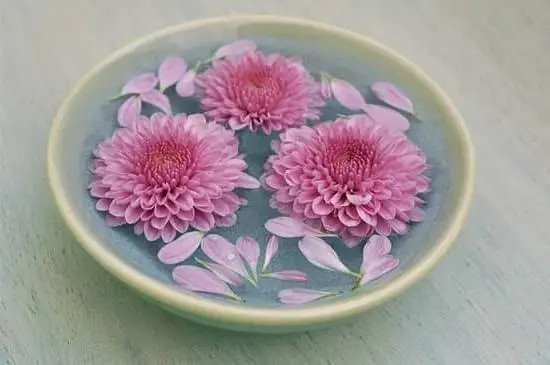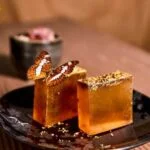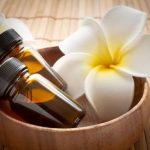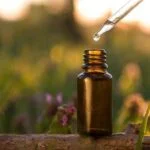Aromatherapy, a practice that harnesses the power of essential oils for therapeutic purposes, has gained significant popularity in recent years. This ancient healing technique, with its roots dating back thousands of years, is now experiencing a resurgence as people seek natural and alternative therapies to enhance their well-being.
Aromatherapy can be defined as the use of aromatic plant extracts, or essential oils, to promote physical and psychological health. These oils are derived from various parts of plants, such as leaves, flowers, bark, and seeds, through methods like steam distillation or cold-press extraction. The resulting essential oils possess unique chemical compositions that contribute to their therapeutic properties.
In today’s fast-paced world filled with synthetic compounds and artificial fragrances, the increasing interest in aromatherapy comes as no surprise. With an emphasis on holistic healing and wellness, many individuals are turning to aromatherapy as a natural way to support their physical and mental health.
This article aims to delve into this growing field by exploring the science behind aromatherapy, various methods of application, diverse range of essential oils used, as well as its benefits for both physical and psychological well-being. So whether you’re new to aromatherapy or looking to expand your knowledge in this area, read on to discover how the power of scent can enhance your overall well-being.
Understanding the science behind aromatherapy
Aromatherapy is a holistic healing practice that utilizes the aromatic compounds derived from various plants to promote physical and mental well-being. To understand how aromatherapy works, it is important to explore the science behind this ancient practice.
Essential oils, which are the foundation of aromatherapy, are extracted from different parts of plants such as leaves, stems, flowers, and roots. The extraction methods vary depending on the plant material and the desired oil. Common techniques include steam distillation, cold-press extraction, and solvent extraction. These processes ensure that the volatile compounds responsible for the therapeutic properties of essential oils are captured effectively.
The chemical composition of essential oils plays a crucial role in their therapeutic benefits. Essential oils consist of various components such as terpenes, aldehydes, esters, ketones, and phenols. Each component contributes to the unique aroma and potential medicinal qualities of a specific oil. For example, lavender essential oil contains linalool and linalyl acetate which have calming and sedative effects on the nervous system.
To better understand the therapeutic properties of essential oils, it is helpful to examine their classification into different chemical families. Some common families include monoterpenes (found in oils like lemon and pine), sesquiterpenes (found in oils like frankincense and cedarwood), phenols (found in oils like clove and oregano), and aldehydes (found in oils like citronella and lemongrass). Each family has its own set of properties that contribute to its beneficial effects on physical health.
Understanding the science behind aromatherapy sheds light on why these natural substances can have such powerful effects on our well-being. By exploring their chemical composition and therapeutic properties, we can gain a deeper appreciation for how essential oils can support our physical health and promote emotional balance.
| Extraction Methods | Commonly Used Essential Oils |
|---|---|
| Steam Distillation | Lavender, Tea Tree, Peppermint |
| Cold-Press Extraction | Lemon, Orange, Grapefruit |
| Solvent Extraction | Jasmine, Rose, Neroli |
The various methods of using aromatherapy
Aromatherapy offers a variety of methods for using essential oils to reap their therapeutic benefits. This section will discuss some popular methods of utilizing aromatherapy, including inhalation, topical application, and the use of aromatherapy diffusers.
Inhalation
Inhalation is one of the most common and effective methods of using aromatherapy. This method involves breathing in the aroma of essential oils, which then stimulates the olfactory system and impacts our brain’s limbic system, responsible for emotions and memory. There are a few ways to practice inhalation:
- Direct Inhalation: Place a few drops of your chosen essential oil onto a tissue or handkerchief and hold it close to your nose. Breathe deeply and allow the scent to calm or invigorate you depending on the desired effect.
- Steam Inhalation: Add a few drops of essential oil to boiled water in a bowl. Cover your head with a towel, creating a tent over the bowl, and inhale the steam for 5-10 minutes. This method can be helpful for respiratory issues such as congestion or sinusitis.
Topical Application
Topical application involves applying diluted essential oils directly onto your skin. Before applying any essential oil topically, it is important to dilute it with a carrier oil like jojoba oil or coconut oil to reduce the risk of skin irritation or sensitization. Some common methods of topical application include:
- Massage: Mix 1-2 drops of an essential oil with a carrier oil and use it to give yourself or receive a massage from someone else. Massage not only allows for absorption through the skin but also promotes relaxation and circulation.
- Bathing: Add 5-10 drops of your chosen essential oil to warm bathwater and mix well before getting in. The heat enhances diffusion into the air while allowing for absorption through the skin.
Aromatherapy Diffusers
Aromatherapy diffusers are devices specifically designed to disperse essential oils into the air, allowing for easy inhalation and creating a lasting aroma throughout a room. There are several types of diffusers available:
- Ultrasonic Diffusers: These diffusers use electronic frequencies to create vibrations that break down essential oils in water and release them as a fine mist into the air.
- Nebulizing Diffusers: These diffusers do not require water or heat but instead use pressurized air to atomize and disperse pure essential oil particles into the air in their most potent form.
- Evaporative Diffusers: These diffusers use a fan or passive airflow to diffuse essential oils by evaporating them from a pad or surface. These are often portable and simple to use.
It’s important to note that different methods of aromatherapy may be more suitable depending on individual preferences, health conditions, or settings. Understanding the various methods allows individuals to choose the best approach for themselves and their specific needs.
Exploring the diverse range of essential oils used in aromatherapy
Essential oils are the backbone of aromatherapy, each possessing unique properties and benefits. Here, we will delve into some of the most commonly used essential oils in aromatherapy and explore their distinct qualities.
- Lavender: Known for its calming and soothing properties, lavender oil is often used to promote relaxation and improve sleep quality. It has also been found to help relieve headaches and reduce stress levels.
- Eucalyptus: With its refreshing and invigorating scent, eucalyptus oil is frequently used for respiratory conditions such as coughs, colds, and sinus congestion. It can also aid in mental clarity and boost energy levels.
- Peppermint: Peppermint oil is known for its cooling sensation and ability to enhance focus and concentration. It can help alleviate digestive discomforts like bloating and indigestion while providing a refreshing aroma.
- Tea Tree: Renowned for its antimicrobial properties, tea tree oil is commonly used to treat skin conditions such as acne, fungal infections, and cuts or wounds. Its powerful scent can also provide a sense of freshness.
- Lemon: Extracted from the peel of fresh lemons, lemon oil has uplifting properties that can improve mood and increase mental alertness. It’s often employed as a natural disinfectant due to its antibacterial qualities.
- Chamomile: Chamomile oil possesses soothing properties that make it beneficial for promoting relaxation and relieving anxiety or nervous tension. It can also be used topically to soothe irritated skin or calm eczema flare-ups.
- Rosemary: With its invigorating aroma, rosemary oil can help enhance memory retention, improve focus, and stimulate circulation. This versatile oil can be utilized in blends aimed at improving hair growth or reducing muscular aches.
- Ylang Ylang: Known for its exotic floral fragrance, ylang-ylang oil can promote relaxation, reduce feelings of stress, and enhance libido. It is often utilized in perfumes or as an aphrodisiac.
These are just a few examples of the diverse range of essential oils used in aromatherapy. Each oil has its own unique scent profile and therapeutic benefits, making it important to choose oils based on personal needs and preferences. Whether you seek physical healing, mental relaxation, or emotional balance, incorporating essential oils into your aromatherapy practice can provide a powerful tool for enhancing overall well-being.
The benefits of aromatherapy for physical health
Aromatherapy is not only known for its pleasing scents and mood-enhancing benefits, but it also offers numerous advantages for physical health. Many essential oils used in aromatherapy have therapeutic properties that can help alleviate pain, reduce inflammation, and boost the immune system.
Alleviating Pain
One of the primary benefits of aromatherapy is its ability to provide natural pain relief. Essential oils such as lavender, peppermint, and eucalyptus have analgesic properties that can be effective in reducing various types of pain. When these oils are applied topically or used in massage, they can penetrate the skin and interact with the receptors responsible for pain perception. This interaction helps to dull the intensity of pain and promote a greater sense of comfort.
Reducing Inflammation
Inflammation is a common response by the body to injury or illness. While acute inflammation plays a crucial role in healing, chronic inflammation can lead to various health issues. Aromatherapy can aid in reducing inflammation through the use of essential oils that possess anti-inflammatory properties.
Oils like chamomile, frankincense, and tea tree oil contain compounds that inhibit inflammatory pathways in the body when inhaled or applied topically. By reducing inflammation, these essential oils contribute to better overall health and well-being.
Boosting Immune System
The immune system serves as a defense mechanism against harmful pathogens and diseases. A strong immune system is vital for maintaining good health. Aromatherapy can support immune function by using certain essential oils that exhibit antimicrobial and antiviral properties.
Oils like lemon, oregano, and rosemary have been shown to enhance the body’s defenses against infections when used appropriately. Inhaling these oils through steam inhalation or using them in diffusers creates an environment unfavorable to pathogens, helping to strengthen the immune system and promote wellness.
Studies and research have consistently shown the effectiveness of aromatherapy in promoting physical healing. However, it is important to note that aromatherapy should not replace conventional medical treatments and should be used as a complementary therapy. Individuals with specific health conditions or taking medications should consult with a healthcare professional before incorporating aromatherapy into their wellness routines. By understanding the benefits of aromatherapy for physical health, individuals can explore this natural therapy to enhance their overall well-being.
The psychological benefits of aromatherapy
Aromatherapy is not only known for its physical health benefits but also for its psychological benefits. Certain essential oils have the ability to promote relaxation, reduce anxiety, and improve sleep quality. The sense of smell is closely linked with the brain’s limbic system, which is responsible for emotions and memories. This connection explains why certain scents can have a profound impact on our mood and overall well-being.
One essential oil often associated with relaxation and stress reduction is lavender. Lavender has been used for centuries for its calming properties and is commonly used in aromatherapy to promote better sleep and reduce anxiety. Studies have shown that inhaling lavender oil can lead to reduced heart rate, blood pressure, and cortisol levels (the stress hormone).
Another popular essential oil used for its psychological benefits is bergamot oil. Bergamot has a citrusy scent that is both uplifting and calming. It has been shown to have anxiolytic properties, meaning it can help reduce anxiety symptoms. Inhaling bergamot oil or using it in a diffuser can provide a sense of calm and improve mood.
One study published in the Journal of Alternative and Complementary Medicine found that participants who received aromatherapy massage with lemon oil experienced significantly reduced levels of depression compared to those who received massage without lemon oil. Lemon oil has a refreshing aroma that can uplift mood and help combat feelings of sadness or low energy.
Incorporating aromatherapy into daily routines can be done in various ways such as using a diffuser, adding a few drops of essential oils to bathwater, or even creating personalized blends with carrier oils for body massages or inhalation. Experimenting with different scents and finding ones that resonate with your emotions and needs can help enhance the psychological benefits of aromatherapy.
| Psychological Benefits | Essential Oils |
|---|---|
| Promotes relaxation and reduces anxiety | Lavender, Bergamot |
| Uplifts mood and combats depression | Lemon, Ylang Ylang |
| Improves sleep quality and reduces insomnia | Chamomile, Sandalwood |
Aromatherapy for stress relief and mental well-being
Aromatherapy has proven to be a powerful tool for stress relief and improving mental well-being. The use of essential oils in aromatherapy can create a calming and soothing environment, promoting relaxation and reducing anxiety. By understanding the benefits of specific essential oils and techniques, individuals can effectively incorporate aromatherapy into their daily routines to manage stress and enhance their overall mental health.
One of the key benefits of aromatherapy for stress relief is its ability to promote relaxation. Certain essential oils, such as lavender, chamomile, and ylang-ylang, have been found to have sedative effects on the body, helping to calm the mind and induce a sense of tranquility. These oils can be diffused in a room or added to bathwater for a relaxing soak.
In addition to relaxation, aromatherapy can also help reduce anxiety levels. Essential oils like bergamot, rosemary, and frankincense have been shown to have anxiolytic properties, meaning they can help alleviate symptoms of anxiety. Inhalation is often the preferred method for using these oils, either by adding them to a diffuser or inhaling directly from the bottle.
To further enhance the benefits of aromatherapy for stress relief and mental well-being, certain techniques can be incorporated into a daily routine. One popular technique is creating personal blends of essential oils that cater specifically to individual needs and preferences.
This allows individuals to customize their experience based on their unique emotional state or desired outcome. Another effective technique is utilizing portable diffusers or inhalers that can be carried throughout the day, providing immediate access to the therapeutic benefits of essential oils whenever needed.
Incorporating aromatherapy into daily life is an accessible way to reduce stress levels and promote mental well-being. By understanding which essential oils are most effective for stress management and exploring various application methods and techniques, individuals can harness the power of aromatherapy to improve their overall quality of life.
Whether it’s through diffusing comforting scents at home, carrying a personalized inhaler in a stressful work environment, or creating a calming bedtime routine, aromatherapy offers a natural and enjoyable approach to finding balance and tranquility in today’s fast-paced world.
Safety precautions and considerations in aromatherapy
Aromatherapy can be a beneficial and enjoyable practice when used correctly, but it is important to take safety precautions and consider certain factors before using essential oils. This section will provide guidelines for safe use of essential oils, including dilution ratios and usage restrictions, as well as discuss potential side effects and contraindications to be aware of.
When using essential oils for aromatherapy, it is crucial to remember that they are highly concentrated substances. As such, they should always be diluted before they are applied topically or used in any other form. Dilution helps to minimize the risk of skin irritation or adverse reactions.
A commonly recommended dilution ratio is 2-3 drops of essential oil per teaspoon (5 mL) of carrier oil, such as coconut oil or almond oil. However, some essential oils may require further dilution due to their potency or sensitivity of skin.
It is also important to be aware of any potential allergies or sensitivities you may have before using essential oils. Some individuals may experience allergic reactions or skin irritations when exposed to specific oils. It is advisable to perform a patch test by applying a small amount of diluted oil on a small area of your skin and waiting for 24 hours to see if there is any adverse reaction.
Furthermore, certain essential oils can have specific contraindications or precautions that need to be considered. For example, pregnant women should avoid using certain oils like clary sage and cypress during their first trimester due to their hormonal effects. People with asthma should be cautious when using strong respiratory-stimulating oils such as peppermint or eucalyptus as they might exacerbate symptoms.
Incorporating aromatherapy into daily routines
Aromatherapy has become increasingly popular as people seek natural and alternative therapies to enhance their overall well-being. The use of essential oils in aromatherapy offers a wide range of benefits for both physical and mental health. Luckily, incorporating aromatherapy into daily routines is simple and can be done in various ways.
One of the easiest ways to enjoy the benefits of aromatherapy is by using an aromatherapy diffuser. These devices disperse essential oils into the air, allowing you to breathe in the therapeutic scents. Diffusers come in different forms such as ultrasonic diffusers, nebulizing diffusers, and evaporative diffusers. You can simply add a few drops of your favorite essential oil or create personalized blends to suit your needs.
Another common method of using aromatherapy is through topical application. Essential oils can be diluted with carrier oils like jojoba oil or coconut oil and applied directly onto the skin. This method allows for absorption through the skin, providing localized benefits. It is important to note that some oils may cause skin irritation if not properly diluted, so it is recommended to do a patch test first.
Additionally, inhalation is a popular way to experience the benefits of aromatherapy. You can inhale essential oils by adding a few drops to a bowl of hot water and placing a towel over your head to create a steam tent. Another option is using inhalers specifically designed for aromatherapy purposes.
To incorporate aromatherapy into your daily routine, consider starting your day off with an energizing scent like citrus or peppermint in your shower gel or lotion. Throughout the day, you can also use a personal inhaler or apply essential oil blends topically for quick boosts in energy or stress relief.
Conclusion
In conclusion, aromatherapy is a holistic practice that harnesses the power of essential oils to enhance both physical and mental well-being. By understanding the science behind aromatherapy and the various methods of use, individuals can experience the wide range of benefits that these natural remedies offer.
Through inhalation, topical application, or the use of diffusers, aromatherapy provides an avenue for relaxation, stress reduction, pain relief, and immune system support. The unique benefits and uses of each essential oil allow for personalized blends that cater to individual needs and preferences. Lavender, eucalyptus, peppermint, and many other essential oils have proven their effectiveness in promoting healing and overall improved quality of life.
It is important to approach aromatherapy with caution and adhere to safety guidelines to minimize any potential risks associated with essential oil usage. Dilution ratios and usage restrictions should be followed carefully to prevent adverse effects. Moreover, individuals should be aware of any potential side effects or contraindications specific to certain oils.
Incorporating aromatherapy into daily routines can bring a sense of balance and tranquility to one’s life. Creating personalized blends or using diffusers are just a few ways to explore this alternative therapy at home or in various settings. By embracing aromatherapy as a complementary practice for physical and mental health enhancement, individuals may find themselves on a path towards greater well-being.
For those interested in delving deeper into the world of aromatherapy, there are numerous resources available for further learning and exploration. Books dedicated to the subject matter as well as professional courses can provide comprehensive knowledge on essential oils and their applications. By taking the time to educate oneself about aromatherapy, readers can fully appreciate its potential benefits in enhancing overall well-being.
Frequently Asked Questions
Does aromatherapy have any real benefits?
Aromatherapy is a practice that involves using essential oils to promote well-being and health. While some people swear by its benefits, it is important to note that scientific evidence supporting aromatherapy’s effectiveness is limited. However, there are certain potential benefits associated with it.
For instance, certain essential oils like lavender have been found to have a relaxing effect and may help reduce anxiety and improve sleep quality. Some oils containing eucalyptus or peppermint have also been used for their potential respiratory benefits in relieving congestion or soothing coughs. Additionally, aromatherapy can offer a pleasant sensory experience that may enhance relaxation and mood.
How does aromatherapy work in the body?
The mechanism behind how aromatherapy works in the body is not yet fully understood, but there are several theories that explain its effects on our physical and emotional well-being. One theory suggests that when aromatic molecules from essential oils enter our nose, they stimulate the olfactory system, which then sends signals to the brain, particularly the limbic system responsible for emotions and memories.
This interaction between aromatic compounds and our brain can evoke various responses such as relaxation, stress reduction, or even improved focus and alertness. Another hypothesis proposes that the chemical components of essential oils could have direct effects when absorbed into the bloodstream through inhalation or topical application.
What are the three types of aromatherapy?
There are three main types of aromatherapy commonly practiced: inhalation aromatherapy, topical aromatherapy, and aerial diffusion aromatherapy. Inhalation aromatherapy involves breathing in essential oil vapors using methods like steam inhalation or using a diffuser (which disperses tiny oil droplets into the air). When we inhale these vapors, they pass through our nasal cavity where they interact with receptors linked to our olfactory system, potentially eliciting both physiological and psychological responses. Topical aromatherapy refers to applying diluted essential oils directly onto the skin via massage or other methods where absorption can occur.
This allows the essential oils to be absorbed into the bloodstream and potentially provide localized effects. Aerial diffusion aromatherapy involves releasing essential oil molecules into the atmosphere through methods such as using diffusers, sprays, or even adding a few drops of oil onto a tissue or cloth. This allows the aromatic molecules to be dispersed throughout a room or space, offering therapeutic benefits to those present.

Are you looking for a natural way to improve your health and wellbeing?
If so, aromatherapy may be the answer for you.





